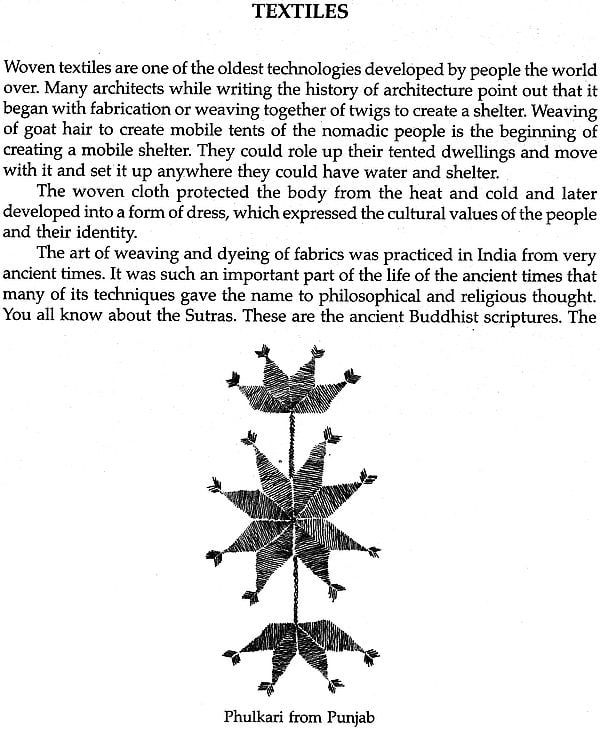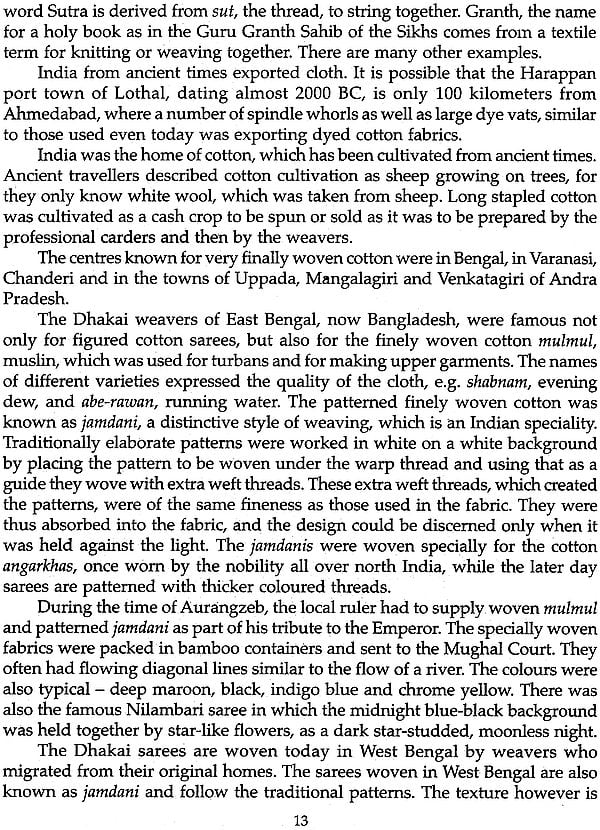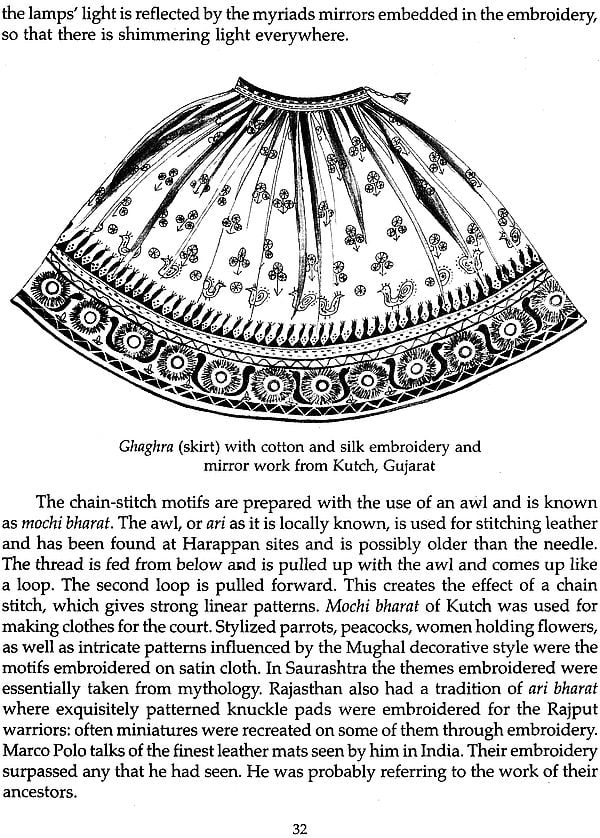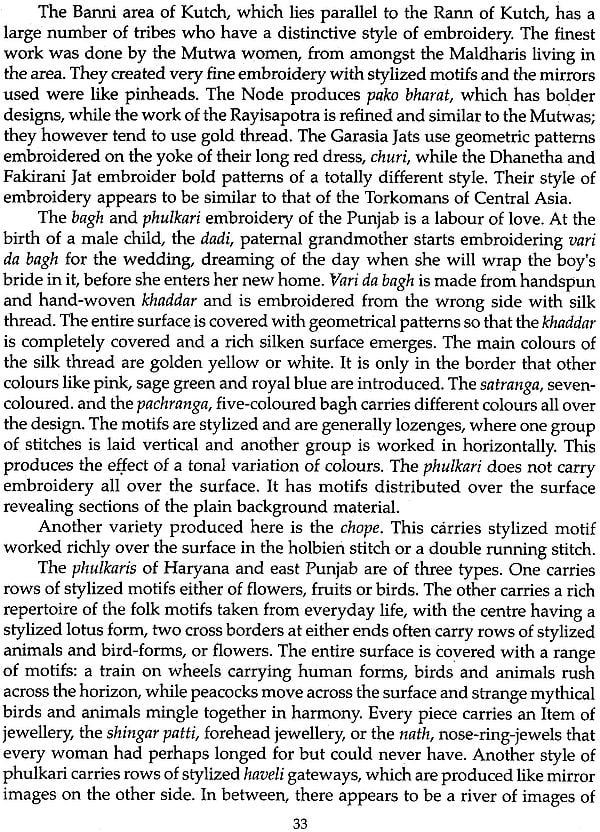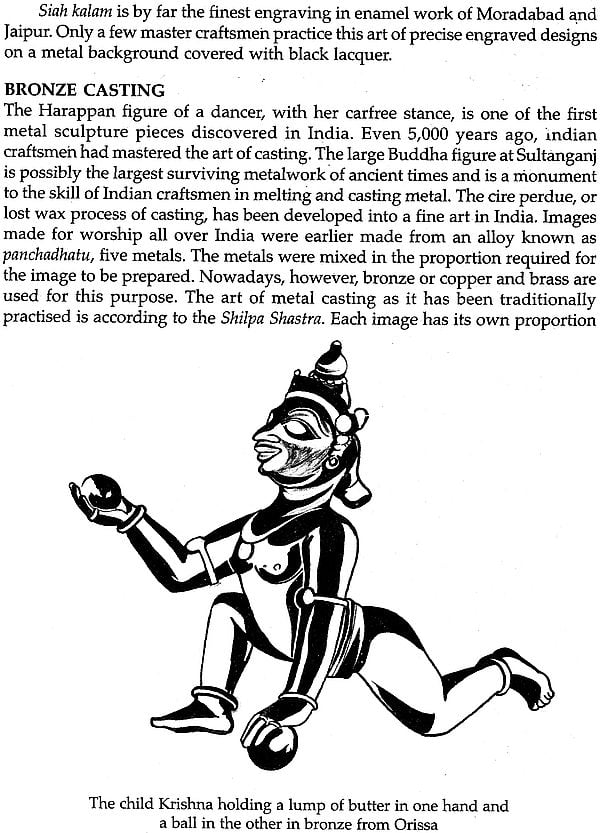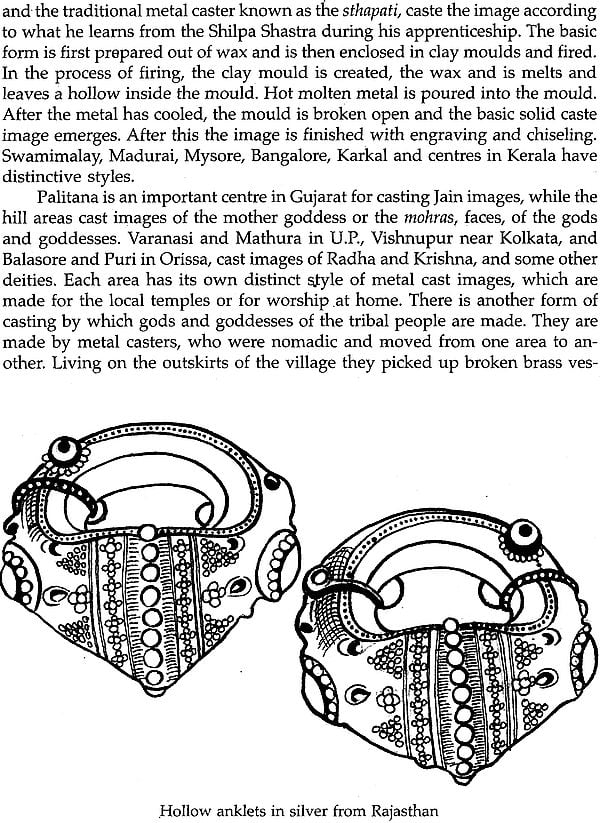
Handicrafts of India Our Living cultural Tradition
Book Specification
| Item Code: | IDD302 |
| Author: | Jasleen Dhamija |
| Publisher: | National Book Trust, India |
| Language: | English |
| Edition: | 2002 |
| ISBN: | 8123739753 |
| Pages: | 67 |
| Cover: | Hardcover |
| (b&w.illus.:27)weight of the book: 325 gms | |
| Other Details | 10" x 7.5" |
| Weight | 330 gm |
Book Description
INTRODUCTION
We are so fortunate in India that life provides us with an opportunity to create objects with the skill of the hand, the perception of the mind and the love of beauty as seen by the eyes. How often a child will make a kite with just a few things, paper, scissors, bamboo strips and sticking paste. Boys and girls will join in creating decorations for the home, for the panchayat ghar for festive occasions. It is a rich tradition, which is a part of our life, punctuated with festive occasions, be it Deepavali, Eid, Gurupurab or Christmas.
Hand made objects created for the home, for our everyday use, for our clothes are created by professional people, who have been carrying on this tradition for the last 5000 years. We are perhaps one of the only countries in the world where we are still connected with our past, as we stride forward to meet the challenges of the Third Millennium. It is a fact that creativity is in our very blood and we have created history by developing a computer, which is so inexpensive that it can find its way into every village and in most homes in the next few years.
Gandhiji, the Father of the Nation, who led us to freedom from the British rule with his extraordinary movement of non-violence, understood the power that les in creativity, in working with our hands, our mind and our understanding. He is the only leader who fought the powerful British Empire with very simple tools. Satyagraha, resistance with non-violence by not cooperating with the rulers, which paralyzed the government. The other was the call for swadeshi, asking the people not to use or buy foreign goods, but use those produced in India. Then the other was khadi, the handspun, hand-woven cotton to become the uniform of the freedom fighters. Gandhi Topi, the clothe cap, became another important symbol, which united people throughout the country. The turban, which created differences between people, which separated us from each other, as every community had different styles of turbans, when replaced by the simple Gandhi cap wiped out our differences. We became soldiers of the freedom struggle. Never before did a cloth or a piece of apparel become a powerful political weapon, as Khadi and the Gandhi topi.
Gandhiji also recognized the importance of developing the skills of the hand. For any act of creation be it as simple as making a broom, a basket, a paper kite, a spinning top, required the skill of the hands, the concentration of the mind, the sharpness of the eye, for them to be effective for the purpose that they were created. Once we have developed this ability, the human being could develop the ability to design, to build effectively anything from a stone-carved building, a computer, to a satellite.
Let us now go on a journey to see the beautiful objects created by masters young and old throughout our country.
